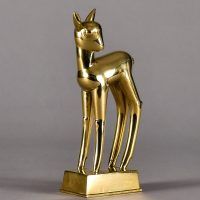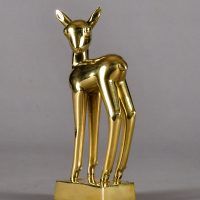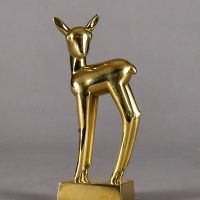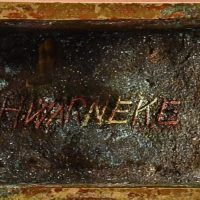Artist Biography
Heinz Warneke, born in Bremen, Germany, trained as a sculptor in Europe. Known for his granite sculptures of animals, he enrolled at the Stadtische Kunstgewerbe Schule in Bremen, and later at the Akademie der Bildenden Künste in Berlin. He joined the German Monuments Commission during World War I to create war memorials. After the war, at the age of 28, he came to America: first to St. Louis, followed by New York, Washington DC, and finally Connecticut. Between 1940 and 1942, he taught sculpture at the Warneke School of Art. From 1943 to 1968, he headed the sculpture department at the Corcoran School of Art and taught sculpture at George Washington University.
During the early 1940s in Pennsylvania, Warneke created the work for which he is best known: his Nittany Lion on display at the Pennsylvania State University. In 1962, he created his African Cow Elephant and Calf for the entrance at the Philadelphia Zoo. Carved from a single block of granite, it is considered the largest freestanding monolithic sculpture in America. Aside from this distinction, the piece is noteworthy for its interaction of broad planes and the affectionate emotion projected by the protective and caring gesture of the mother elephant’s trunk.
His awards include the Logan Medal at the Art Institute of Chicago in 1930 for his Water-Carrier, the Widener Gold Medal at the Pennsylvania Academy of Fine Arts in 1935 for his Wild Boars, First Prize at the St. Louis Artist’s Guild in 1925, and the First Prize and Bronze Medal of the Society of Washington Artists in 1943.


















